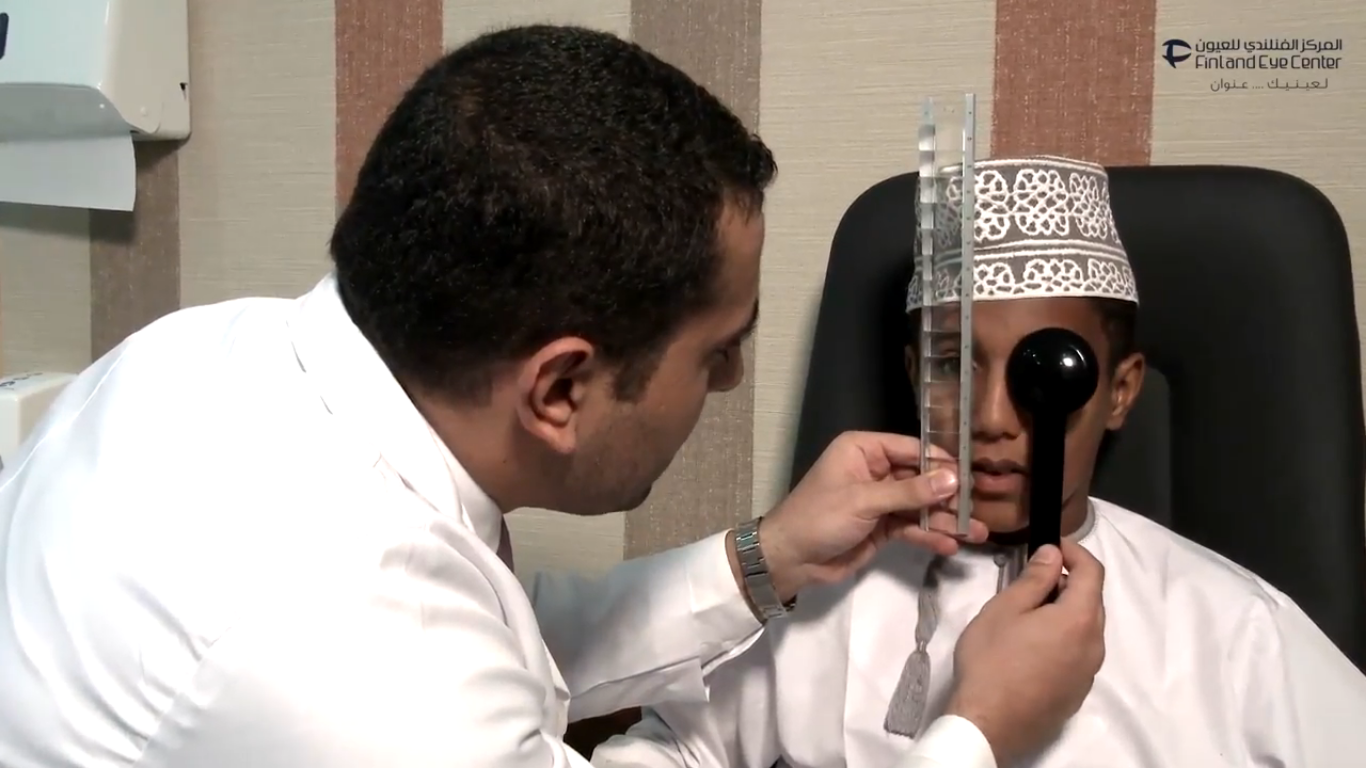
Squint (also known as strabismus) is a misalignment of the eyes that arises due to an imbalance of the muscles that move the eyes, faulty nerve signals to those muscles or high uncorrected hyperopia (farsightedness). Most common forms of squint present as horizontal (inward or outward deviation) and vertical (upwards or downwards deviation), as well as more complex forms. Squint can be apparent all day or only at times such as when tired.
Squint can technically occur at any age. A baby can be born with a squint or develop one soon after birth. Most commonly, squint develops early on but it is possible for a teenager or an adult to develop the condition as well. Other conditions such as accidents and tumours can lead to squint also.
When the eyes are misaligned, they send two different images to the brain. A child can ignore one of those images but this can lead to the eye not developing properly and causing amblyopia, or lazy eye. An adult with misaligned eyes, however, will find it difficult to ignore and may see double. This can become not only frustrating but potentially hazardous in situations such as traffic.
Especially for children, it is important to seek professional advice quickly as proper visual alignment is important for depth perception, good vision and to avoid double vision, amblyopia and head tilts. Many children with squints have poor vision in the affected eye and the sooner treatment is started the better the results.
The first part is a thorough examination and evaluation of the squint. Depending on the age of the patient, different methods are available with the aim to restore or preserve vision, realign the eyes and finally to restore binocular vision if possible. Glasses, occlusion therapy in children (covering the 'good' eye and forcing the lazy eye to work), and surgical intervention are options for treating squint. The key to non-surgical options is co-operation between the patient and doctor and especially the family of a young patient. It should be noted that squint will very rarely resolve itself without treatment i.e. a child will usually not 'grow out of it'. Squint surgery is an option for cosmetic reasons as well. A squint specialist determines the timing of surgical intervention.
Squint surgery involves a carefully planned recession or resection (or a combination) of relevant muscles depending on the type and degree of squint to allow the muscles to work more physiologically. The surgeon, based on pre-operative assessments and calculations, operates individual muscles surrounding the eye to shorten, loosen or reposition the muscle(s), thus allowing the eyes to move in unison. Fixed or adjustable sutures can be used; adjustable ones allowing the surgeon to fine-tune the result within a day or so if needed. Depending on the surgeon's decision, one or both eyes can be operated either under local or general anaesthesia. For children or babies general anaesthesia is necessary.

As with all procedures, results may vary and risks and side effects exist.
Redness will be noted after squint surgery but this will clear with time. Itchiness, foreign-body sensation (usually due to sutures, which will be removed within a few weeks) and some discomfort are likely to be experienced but should resolve in a short time and can be alleviated with drops or sometimes oral painkillers. Itching and rubbing should be avoided. Double vision is also possible at the beginning but should resolve soon. Prescribed medications (eye drops or oral medications) must be used as advised to ensure safe, infection-free recovery.
Normal vision activities (such as reading) can and should be resumed as soon as possible to get the eyes working. For children, playing with sand, face paints etc. should be avoided for at least 2 weeks and care should be taken to avoid any product getting into the eyes. Swimming should be avoided for at least 1 month. For adults, driving permission will be given by your ophthalmologist when appropriate.
It is possible that further surgeries are needed to attain the best possible result, especially if the surgery is performed on a very young patient. Intra-operative complications are possible though rare and do not usually risk visual acuity (such as sclera tearing or incorrect muscles being operated). Eye globe perforation is extremely rare. Post-operative complications include slipped muscle/loose sutures, which require re-suturing, and infections, which are likely avoidable with proper use of medications and aftercare.
If recommendations are made for glasses and/or patching treatment after surgery, make sure they are followed as this will be essential especially for normal eye development in youngsters. If an eye is already amblyopic, squint surgery is likely not to improve the visual acuity. Parental co-operation with child patients is essential especially with post-operative care to avoid infections and encourage glass-use to attain best rehabilitation. Regular follow-ups are necessary.
Note: Squint surgery involves many steps from pre-operative examination to anaesthesia, squint surgery itself to post-operative care and follow-up. Each of these steps requires care and co-operation from all involved. While all effort is made to ensure successful surgery, it is important to make an informed decision, before signing the consent form.